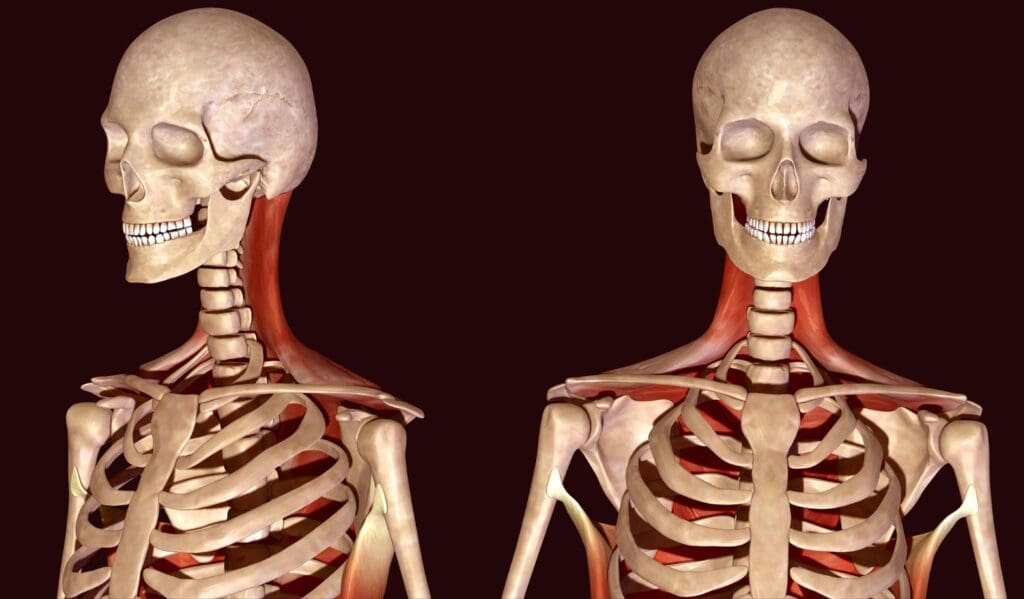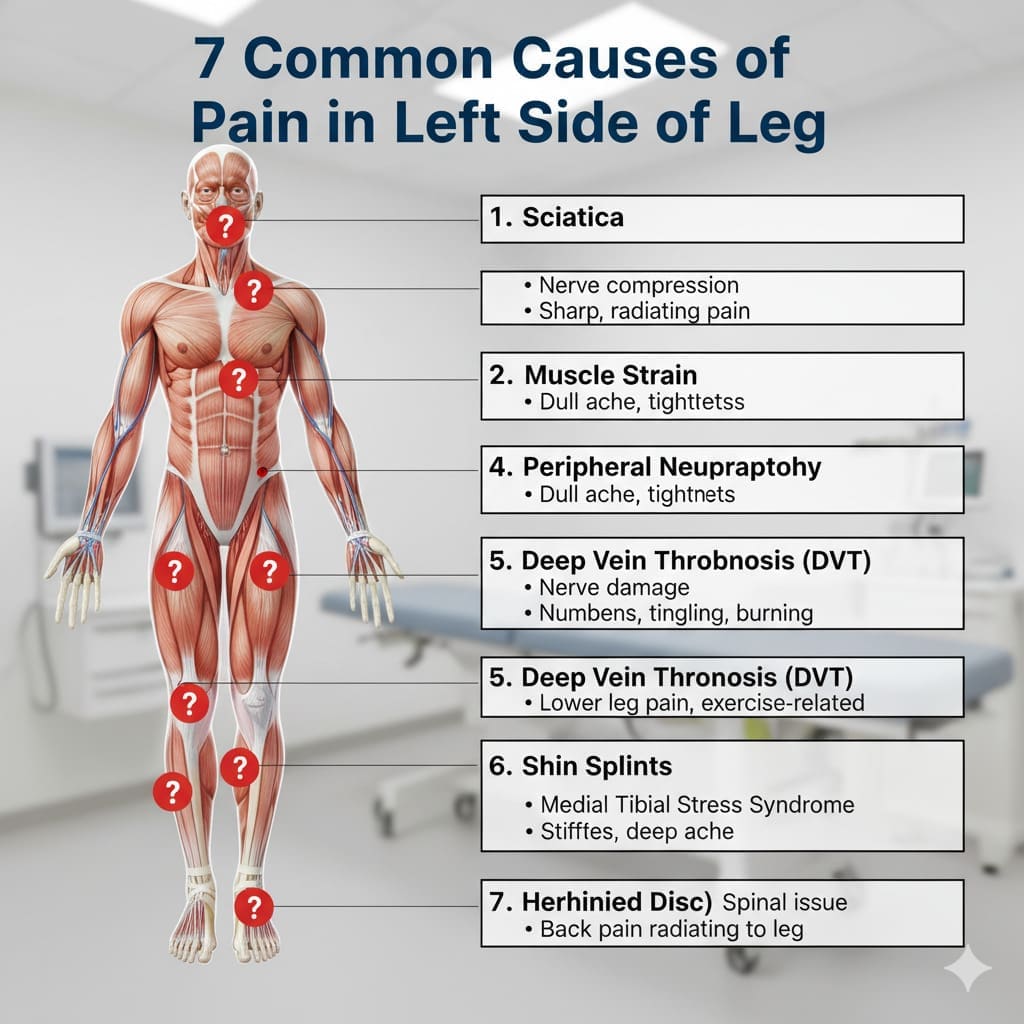Last Updated on November 27, 2025 by Bilal Hasdemir

Cancer spreading to the skeleton can change bone health and life quality. Metastatic bone disease happens when cancer cells from other parts of the body reach the bones. This leads to serious health issues.
This can cause bone pain, broken bones, and high calcium levels. These problems greatly affect patients’ lives. At Liv Hospital, we focus on patient care and new ways to treat this condition.
Key Takeaways
- Cancer spreading to the bones can lead to significant skeletal complications.
- Metastatic bone disease results in bone pain, pathological fractures, and hypercalcemia.
- Liv Hospital provides patient-centered care for those with metastatic bone disease.
- Multidisciplinary approaches are used to manage the condition.
- Early intervention can improve the quality of life for affected patients.
Understanding Metastatic Bone Disease
To understand metastatic bone disease, we need to see how cancer cells affect bones. This interaction is key to how the disease grows and affects us. We’ll dive into what metastatic bone disease is and how it works.
Definition and Pathophysiology
Metastatic bone disease happens when cancer spreads to bones from other parts of the body. This can come from places like the breast, prostate, or lung. The cancer cells and bones interact in a way that can lead to osteolytic or osteoblastic lesions.
Osteolytic lesions cause bones to break down. On the other hand, osteoblastic lesions make bones form in an abnormal way. This is because cancer cells disrupt the normal bone repair process.
Prevalence and Impact on Cancer Patients
Bone metastasis is common in cancers like breast, prostate, and lung. It greatly affects cancer patients’ lives, causing pain, fractures, and other problems. We must think about how widespread and impactful bone metastasis is when we care for cancer patients.
Research shows that bone metastasis is most common in prostate, breast, and lung cancer patients. These patients often face a lot of pain, high calcium levels, and broken bones. Finding good ways to manage these issues is key to helping them feel better.
The Process of Cancer Metastasis to Bone
It’s important to know how cancer spreads to bone to find better treatments. Cancer cells move to bone through a complex process. This involves the bone environment, growth factors, and cytokines.
Mechanisms of Bone Tropism
Bone tropism is when certain cancer cells prefer to go to bone. This choice is influenced by growth factors and cytokines from the bone. The bone environment is key in where cancer cells settle. For example, certain chemokines and receptors on cancer cells help them find bone.
A leading oncologist said, “The bone environment is perfect for cancer cells to grow. It’s full of growth factors and is always changing.”
“The interaction between cancer cells and the bone environment is vital for bone metastasis.”
Primary Cancers Commonly Associated with Bone Metastasis
Some cancers are more likely to spread to bone. These include breast, prostate, and lung cancers. Below is a table showing these cancers and their bone metastasis traits.
| Primary Cancer | Frequency of Bone Metastasis | Characteristics of Bone Metastasis |
|---|---|---|
| Breast Cancer | High | Osteolytic and osteoblastic lesions |
| Prostate Cancer | High | Primarily osteoblastic lesions |
| Lung Cancer | Moderate to High | Often osteolytic lesions |
For more on finding bone metastasis, check out this resource. It talks about PET scans in diagnosing bone metastasis.
Classification of Osseous Metastatic Lesions
Osseous metastatic lesions can be divided into two main types. This division helps us understand how they affect bones and their function. It’s key for treating and managing metastatic bone disease.
Osteolytic Metastatic Disease: Bone Destruction
Osteolytic disease causes bone tissue to break down because of cancer cells. This type of lesion can lead to a higher risk of bone fractures and high calcium levels in the blood.
Key Features of Osteolytic Lesions:
- Bone destruction
- Increased risk of fractures
- Hypercalcemia due to bone resorption
Osteoblastic Metastatic Disease: Abnormal Bone Formation
Osteoblastic disease makes bones form abnormally because of cancer. This can make bones denser but also weaker.
Characteristics of Osteoblastic Lesions:
- Abnormal bone formation
- Increased bone density
- Potential for bone pain and structural complications
To show the differences between osteolytic and osteoblastic diseases, here’s a table:
| Characteristics | Osteolytic Lesions | Osteoblastic Lesions |
|---|---|---|
| Effect on Bone | Bone destruction | Abnormal bone formation |
| Common Primary Cancers | Breast, lung, thyroid | Prostate, breast |
| Clinical Implications | Pathological fractures, hypercalcemia | Bone pain, structural complications |
Knowing how to classify osseous metastatic lesions is vital. It helps in creating better treatment plans and improving patient care. By understanding osteolytic and osteoblastic diseases, doctors can better meet each patient’s needs.
Patterns of Metastatic Bone Disease
It’s important to know the different patterns of metastatic bone disease. This knowledge helps in managing the disease effectively. The disease can affect bones in various ways, from a single spot to all over the skeleton.
The spread of cancer in bones greatly affects how well a patient does and what treatments they need.
Diffuse Osseous Metastases
Diffuse osseous metastases mean cancer cells are all over the skeleton. This usually happens in very advanced cancer and can cause a lot of problems. Diffuse osseous metastatic disease can lead to fractures and even harm the spinal cord.
Managing diffuse osseous metastases is complex. We will look at how to handle this in more detail later.
Multifocal Osseous Metastatic Disease
Multifocal osseous metastatic disease means cancer is in many places in the bones. This is common in cancers like breast and prostate.
- Multifocal disease can cause damage to bones and abnormal growths.
- Having cancer in many places makes treatment planning harder.
- Doctors might use radiation to help manage symptoms and prevent further problems.
Widespread Osseous Metastatic Disease
Widespread osseous metastatic disease is when cancer has spread all over the bones. This is a very serious condition with a poor outlook and lots of symptoms.
Handling widespread disease needs a team effort. This includes using medicines that target cancer in bones and supportive care. We will dive into these methods later.
In summary, metastatic bone disease comes in different forms. Knowing these differences is key to giving the best care. By understanding the unique aspects of each type, doctors can create personalized treatment plans for their patients.
Cancer-Specific Patterns of Bone Metastasis
Bone metastasis patterns vary with each cancer type. This shows how different cancers affect bones in unique ways. These differences impact how the disease grows and how well patients do.
Prostate Cancer and Blastic Metastatic Lesions
Prostate cancer often leads to blastic metastatic lesions. These lesions cause bones to grow abnormally, making them more likely to break. Cancer cells change the bone’s structure, affecting its strength.
Most prostate cancer patients with advanced disease get bone metastases. These can make bones appear denser on scans.
Breast, Lung, and Other Primary Malignancies
Breast and lung cancers have different bone metastasis patterns than prostate cancer. They can cause both osteolytic (bone-destroying) and osteoblastic (abnormal bone growth) lesions. This often leads to a mix of both.
- Breast cancer bone metastases can be either osteolytic or osteoblastic, with the former being more common.
- Lung cancer frequently metastasizes to bone, causing osteolytic lesions that can lead to significant bone destruction and hypercalcemia.
- Other primary malignancies, such as renal cell carcinoma and thyroid cancer, can also metastasize to bone, often resulting in osteolytic lesions.
It’s key to understand these patterns to improve treatment and patient outcomes. Tailored approaches are needed for managing bone metastases in various cancers.
Skeletal Consequences of Metastatic Disease to Bone
Metastatic disease to bone causes a lot of problems, like weak bones and unstable structures. We will look at the different issues that happen because of metastatic bone disease.
Compromised Bone Strength and Structural Integrity
Cancer spreading to bone can make bones weak. This happens because cancer cells damage or change bone tissue.
Mechanisms behind compromised bone strength include:
- Cancer cells directly destroying bone tissue
- Cancer cells altering the normal bone remodeling process
- Release of factors by cancer cells that stimulate osteoclasts, leading to bone resorption
Pathological Fractures: Causes and Risk Factors
Pathological fractures are a big problem with metastatic bone disease. These fractures happen when bones weakened by cancer break.
Risk factors for pathological fractures include:
| Risk Factor | Description |
|---|---|
| Location of metastasis | Metastases in weight-bearing bones like the femur or spine are very risky. |
| Size of the metastatic lesion | Bigger lesions are more likely to cause fractures. |
| Type of cancer | Cancers like breast, prostate, and lung cancer often spread to bones. |
Spinal Instability and Cord Compression
Spinal instability and cord compression are serious problems from metastatic bone disease in the spine. Spinal instability happens when cancer weakens or destroys vertebrae.
Cord compression occurs when a bone metastasis in the spine presses on the spinal cord. This can cause serious neurological problems.
Clinical Manifestations of Metastatic Bone Disease
Metastatic bone disease shows many symptoms that affect a patient’s life quality. These symptoms change based on where and how much the disease spreads.
Bone Pain: Characteristics and Mechanisms
Bone pain is a major symptom of metastatic bone disease. It can be constant or come and go. People often say it feels like a dull ache or sharp stabbing.
The reasons for bone pain are complex. It happens when bone tissue is destroyed and chemicals that cause pain are released.
Bone pain can really hurt a patient’s daily life and happiness. Knowing how bone pain works is key to helping manage it.
Movement Limitations and Functional Impairment
Metastatic bone disease can make it hard to move and do things. Patients may find it hard to move around, making simple tasks tough. It’s important to check how much a patient is affected to help them better.
Neurological Symptoms and Complications
When metastatic bone disease hits the spine or nerves, it can cause neurological problems. Spinal cord compression is a serious issue that can lead to weakness, numbness, or paralysis. We need to act fast to stop permanent damage.
In summary, metastatic bone disease has many symptoms that deeply affect patients. We must understand these symptoms to give the best care and improve their lives.
Metabolic Complications of Osseous Metastatic Disease
Patients with osseous metastatic disease face metabolic issues like hypercalcemia of malignancy. These problems can greatly affect their health and happiness. We will look into how these issues happen and their effects on patients.
Hypercalcemia of Malignancy
Hypercalcemia of malignancy is a serious problem caused by cancer. It makes blood calcium levels too high. This can happen when tumors release a hormone that makes bones break down.
Clinical manifestations include confusion, fatigue, and weakness. These symptoms can really hurt a patient’s ability to function. Prompt recognition and management are key to helping patients feel better.
Anemia and Bone Marrow Suppression
Anemia is a common issue in patients with osseous metastatic disease. It’s often caused by the bone marrow being affected by tumors or treatments. Anemia makes patients tired, short of breath, and weak, making life harder.
It’s vital to treat anemia and bone marrow suppression well. This includes using special medicines and iron supplements. Each patient’s needs are different, so care must be tailored to them.
Managing these metabolic problems needs a team effort. Doctors, endocrinologists, and other experts work together. This ensures patients get the best care possible.
Diagnostic Approaches for Metastatic Disease to Bone
Diagnosing metastatic bone disease needs a mix of imaging and lab tests. We use these methods to spot and track bone metastasis. This is key for picking the best treatment.
Imaging Modalities
Imaging is key in finding metastatic bone disease. We use different imaging methods, each with its own strengths:
- X-rays: Often first, X-rays can spot bone lesions and breaks.
- Computed Tomography (CT) scans: CT scans give detailed views, showing how much bone is involved.
- Magnetic Resonance Imaging (MRI): MRI is great for checking spinal cord and soft tissue issues.
- Bone scans: Bone scans catch changes in bone activity, spotting many bone metastases.
Laboratory Assessment and Biomarkers
Lab tests are also essential for diagnosing and tracking metastatic bone disease. We run several tests, including:
- Tumor markers: Blood tests for specific cancer markers help track disease growth.
- Biochemical tests: Tests on bone turnover and calcium levels show the disease’s metabolic effects.
- Biomarkers: New biomarkers are promising for better diagnosing and tracking metastatic bone disease.
By mixing imaging with lab tests, we can fully diagnose and manage metastatic bone disease. This helps improve patient results.
Treatment Strategies for Hypermetabolic Osseous Metastatic Disease
Managing hypermetabolic osseous metastatic disease needs a detailed plan. We’ll look at different ways to treat it. This includes systemic anticancer therapies, bone-targeted agents, and local treatments.
Systemic Anticancer Therapies
Systemic anticancer therapies are key in treating this disease. They aim to stop cancer cells from growing all over the body. We use chemotherapy, hormone therapy, and targeted therapy based on the cancer type.
Chemotherapy helps treat many cancers that spread to the bones. The right drugs depend on the cancer type.
Hormone therapy works well for cancers like prostate and breast. It lowers hormones that help cancer grow.
Bone-Targeted Agents
Bone-targeted agents are important for bone problems caused by metastatic disease. They help prevent fractures and other bone issues.
Bisphosphonates and denosumab are common agents. Bisphosphonates stop bone breakdown. Denosumab targets a protein that causes bone breakdown.
| Bone-Targeted Agent | Mechanism of Action | Primary Use |
|---|---|---|
| Bisphosphonates | Inhibit osteoclast-mediated bone resorption | Reduce risk of skeletal-related events |
| Denosumab | Targets RANK ligand, reducing bone resorption | Reduce risk of fractures in patients with bone metastases |
Local Interventions: Radiation and Surgery
Local treatments like radiation and surgery are also important. They help manage symptoms and problems caused by bone disease.
Radiation therapy helps with pain, prevents fractures, and treats spinal issues. It can be given from outside (external beam) or inside (brachytherapy).
Surgery is for patients with fractures, spinal problems, or when other treatments don’t work. Surgery aims to fix bones, ease pain, and improve movement.
In summary, treating hypermetabolic osseous metastatic disease requires a mix of treatments. This includes systemic therapies, bone agents, and local treatments. Understanding each treatment helps us create plans that meet each patient’s needs.
Prevention and Management of Skeletal-Related Events
Patients with metastatic bone disease face a high risk of skeletal-related events. This makes prevention and management key to their care. These events can greatly affect their quality of life, causing pain, disability, and serious health risks.
Prophylactic Interventions
Preventing skeletal-related events is vital. Bone-targeted agents like bisphosphonates and denosumab are used to lower the risk. Studies have shown they can make a big difference.
| Intervention | Mechanism of Action | Benefits |
|---|---|---|
| Bisphosphonates | Inhibit osteoclast-mediated bone resorption | Reduce risk of skeletal-related events, alleviate bone pain |
| Denosumab | Monoclonal antibody against RANKL, reducing osteoclast activity | Effective in reducing skeletal-related events, with some studies showing superiority over bisphosphonates |
For more information on managing oncology emergencies, including skeletal-related events, visit Liv Hospital’s resource on oncology emergencies.
Pain Management Approaches
Managing pain is essential for patients with metastatic bone disease. Strategies include medicines and non-medical methods like radiation therapy. The right approach depends on the pain level, patient wishes, and the pain cause.
Combining prophylactic interventions with effective pain management improves patients’ lives. A team effort is needed to ensure patients get the care they need. This way, they can better manage their condition.
Conclusion: Advances in Care and Future Directions
The way we manage metastatic bone disease has changed a lot. New diagnostic and treatment methods have improved patient care. Now, treatments are more tailored to each patient, leading to better results.
Looking ahead, we expect to see even more progress. New treatments and a team approach to care will likely become more common. These changes could greatly improve how patients with metastatic bone disease live their lives.
We are dedicated to leading in healthcare, always seeking the best for our patients. By exploring new treatments, we aim to make a big difference. This way, we can help patients and their families live better lives.
FAQ
What is metastatic bone disease?
Metastatic bone disease happens when cancer cells spread to the bones. This causes problems in the skeleton. We will look at how this affects the bones and the health issues it brings.
How does cancer spread to the bones?
Cancer cells interact with the bone environment, leading to bone metastasis. We will cover how this happens and the cancers most likely to spread to the bones.
What are osteolytic and osteoblastic metastatic disease?
Osteolytic disease involves bone destruction, while osteoblastic disease involves abnormal bone formation. We will explain what these mean for patient care.
What are the patterns of metastatic bone disease?
There are different patterns, like diffuse, multifocal, and widespread bone metastases. We will talk about what these patterns mean for patient care.
How does metastatic bone disease affect bone strength?
Bone metastasis weakens bones, leading to fractures and spinal instability. We will explore why this happens and the risks involved.
What are the clinical manifestations of metastatic bone disease?
Symptoms include bone pain, movement issues, and neurological problems. We will discuss how these symptoms affect patients’ quality of life.
How is metastatic bone disease diagnosed?
Diagnosis uses imaging, lab tests, and biomarkers. We will explain how these tools help diagnose and monitor bone metastasis.
What are the treatment strategies for hypermetabolic osseous metastatic disease?
Treatment includes systemic therapies, bone-targeted agents, and local interventions. We will discuss the treatment options and their impact on patient outcomes.
How can skeletal-related events be prevented and managed?
Prevention and management involve prophylactic measures and pain control. We will explore how these strategies improve patient quality of life.
What is the significance of multifocal osseous metastatic disease?
Multifocal disease is a pattern of bone metastasis with multiple lesions. We will discuss its clinical implications and impact on patient care.
What is the role of bone-targeted agents in managing metastatic bone disease?
Bone-targeted agents help manage bone metastasis by reducing skeletal-related events. We will explain their role in patient care.
How does metastatic bone disease affect patients with different primary cancers?
Bone metastasis varies by primary cancer. We will discuss the specific patterns and their implications for patient care.
What are the metabolic complications associated with osseous metastatic disease?
Metabolic complications include hypercalcemia and anemia. We will discuss the causes and clinical implications of these issues.
- American Academy of Orthopaedic Surgeons (AAOS). (n.d.). Metastatic Bone Disease. Retrieved from https://orthoinfo.aaos.org/en/diseases–conditions/metastatic-bone-disease/
- Canadian Cancer Society. (n.d.). Bone metastases. Retrieved from https://cancer.ca/en/cancer-information/cancer-types/metastatic/bone-metastases
- Musculoskeletal Tumor Society (MSTS). (n.d.). Living with Metastatic Bone Disease. Retrieved from https://www.msts.org/living-with-metastatic-bone-disease








